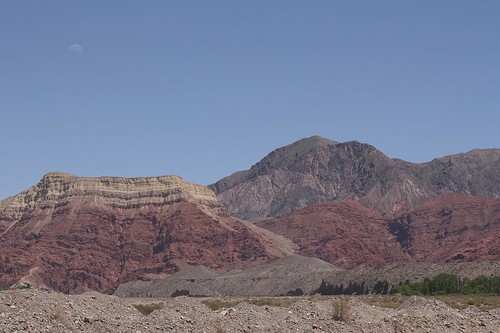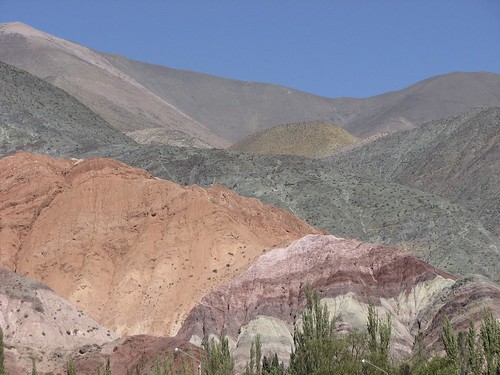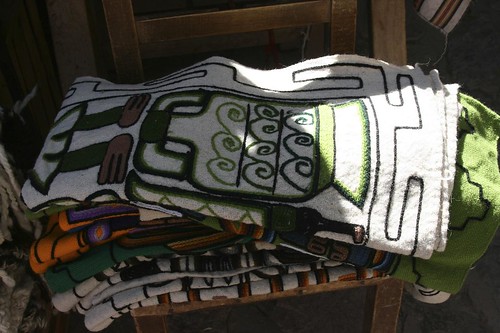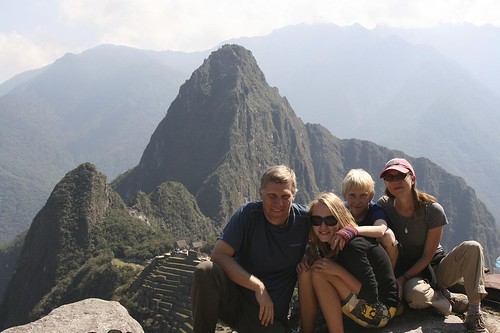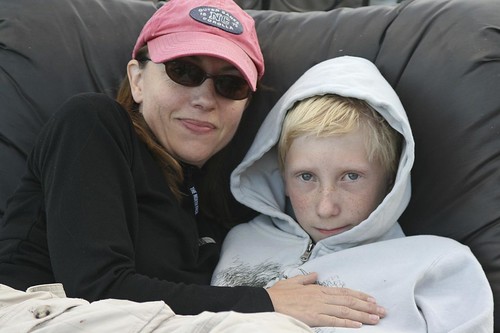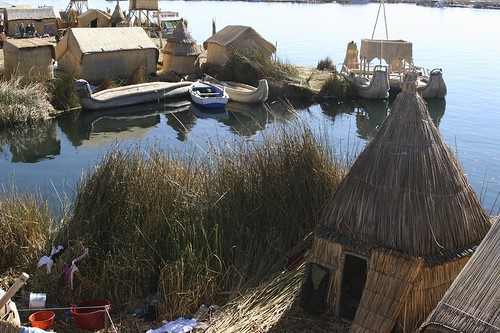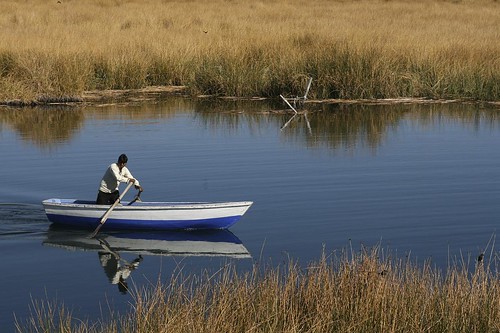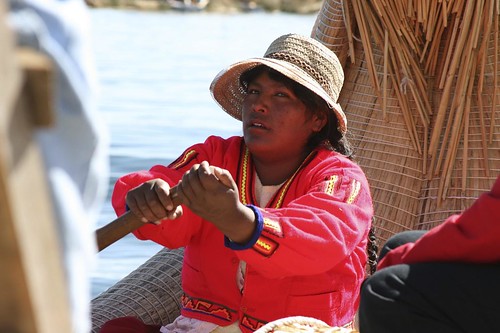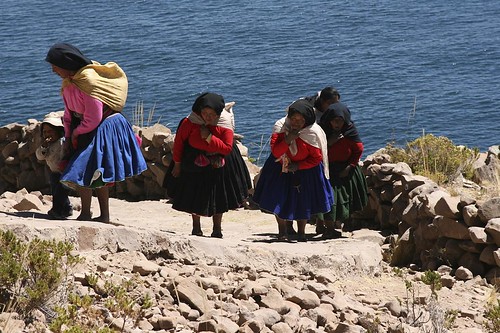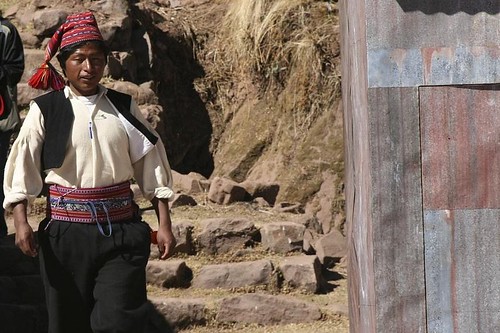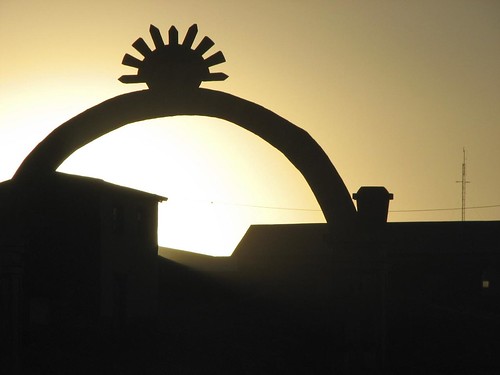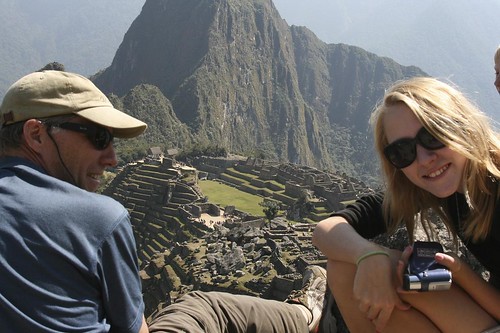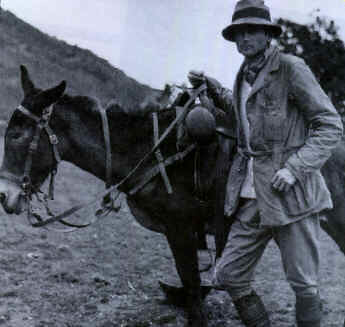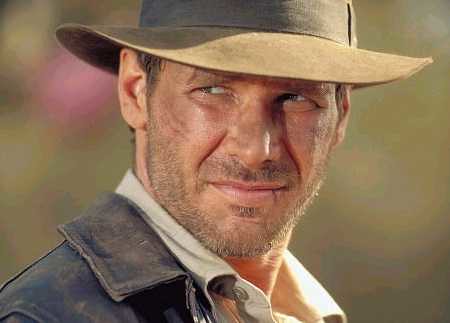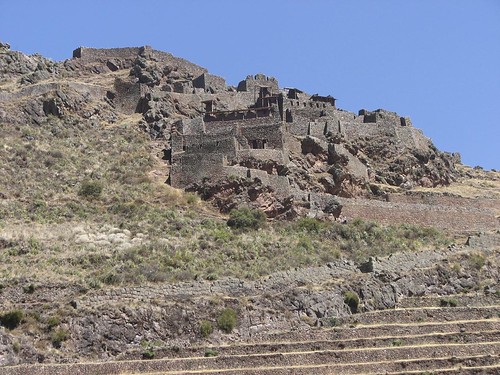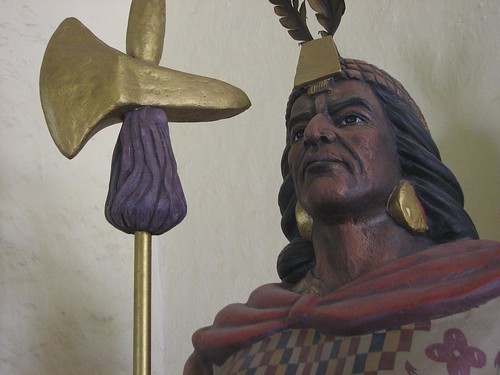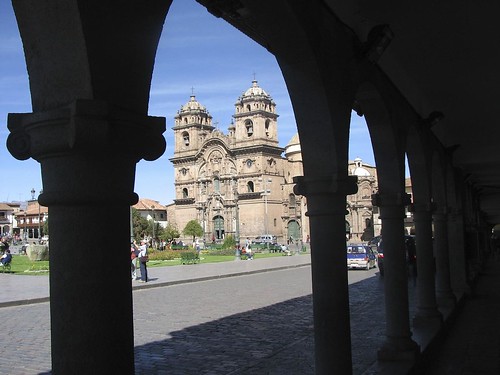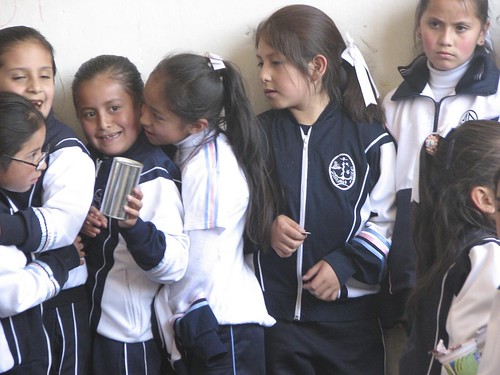Category — Peru
Todas Esas Cosas
We loved our time in South America. This short video, set to Smitten’s “Todas Esas Cosas” (“All of These Things”), includes some of our favorite images from Ecuador, Peru, Argentina and Chile.
November 14, 2008 2 Comments
Lost in Translation
When I was about 16 years old, our family loaded our blue Pontiac station wagon and, for our summer vacation, drove north to Montreal.
I had two years of French from Madame Ewell, and I had assured my father I’d be able to translate for the family while we were in Canada.
I’ll never forget arriving at the Montreal Holiday Inn. As we pulled our car into the hotel garage a bellman approached. I got out of the car, ready to parlez-vous francais. The bellman spoke. To me, it sounded like unintelligible gibberish. This wasn’t the French Madame Ewell spoke.
I stood there in stunned silence. I could see my father’s face getter redder and redder. I can only assume he was hurriedly devising a Plan B since I would clearly be no help.
My own experience as a father has been quite different. Quite simply, I’m not sure how Dani and I would have managed if our kids didn’t speak Spanish. They have handled all the difficult transactions, the questions and answers, and when required, the small talk.
When we did find people who spoke some English, comical conversations often ensued.
November 12, 2008 5 Comments
Around the Bend
Hasan, our guide for the day, picked us up at our hostel at 7 am.
We planned to drive three hours north of Salta to see the Quebrada de Humahuaca, an often-photographed, stunningly beautiful gorge surrounded by multicolored mountains.
Crossing into Jujuy Province, we entered the gorge at the valley bottom, and began the 90 mile drive to the town of Humahuaca.
As we approached the small village of Purmamarca, Hasan pulled the van over to show us the Cerro de los Siete Colores (Hill of Seven Colors, see below), a unique geological formation. We fired off dozens of photographs, both cameras going full speed.
Once we were satisfied we had a decent shot, we headed into the Purmamarca “market,” a tourist trap we hadn’t seen the likes of since Cusco.
Hasan suggested that we meet him back at the van in forty minutes. We wandered around the village square, looking at the same hats, blankets, sweaters and trinkets we’d seen in a dozen different South American markets.
Call me gullible, but I wasn’t prepared for what I saw next.
We entered a small courtyard and began browsing through the merchandise. I stopped short when I saw the Incan wall hanging that I had bought for Dani on the Uros Islands in Peru. The woman I bought it from assured me that she had made the print herself.
All I could do was shake my head. As I turned around to leave, there hanging from the wall, was the Ecuadorian wool poncho Conor had bought in Otavalo. Made locally, we were assured, when we’d paid twelve dollars for it.
Now I was running for the exit, but not before I saw same exact alpaca chullo hats Caroline and Conor had bought from the Quechua children at the entrance to Cotopaxi National Park.
I had to confront my secret fear: That all South American collectibles are made in a factory in China.
October 27, 2008 9 Comments
Our Time in Peru
Machu Picchu was undoubtably the highlight of Peru for us; it’s place that has to be seen to be believed. But there is so much more to this fascinating country – it’s a place anyone could enjoy visiting.
We’ve posted our report on our time in Peru here, including some advice on an itinerary for visiting and other recommendations.
September 15, 2008 6 Comments
Ode To Red
Of the baseball caps I have accumulated over the years, there is just one that fits right, no matter how sweat-stained and faded.
Maybe you have one like it: The one you reach for on a bad hair day, the one that doesn’t puff up too much on top, one that your friends identify as your look. A signature cap.
My kids tease me about mine, especially on this trip since I rarely go out bare-headed. Conor says he can’t find me in a crowd without it. They call it “Red.”
I have been looking for a back-up hat for Red in souvenir shops on vacations since our newlywed days. Just in case—well, in case I lost it.
I have tried on hundreds of baseball caps to no avail.
My head must be some crazy “off” size. Childrens’ hats don’t work, nor do Ladies’. The adjustability feature doesn’t help. The ridge comes down over my ears or too much fabric bunches up top. To be sure, I am picky. Nothing looked as good as Red.
But all those years of trying-on-and-not-finding didn’t really matter.
Because I never lost Red. Not in the sea during a windy sail in St. Johns. Not from a New Mexican mesa’s edge in a sudden gust. Not between Galapagos Islands when the wind was blowing over the bow. Not walking the ruins at Ollytantambo when a dust twister blew past.
That hat, my signature cap, seemed practically part of my head. And it wasn’t going anywhere. I pictured myself wearing it over the grey at the assisted care facility one day.
By now you may have guessed the reason for this desperate essay. Red is gone. And not because of some glorious, memorable adventure.
The cap, my little topper, is riding along in some Cusco taxi.
Maybe as blue as I am.
September 12, 2008 8 Comments
Inca Rules
Dani was feeling much better, but still not well enough to take the Lake Titicaca tour. So the kids and I got up early and caught the bus to the Puno docks to board our boat for a tour of Uros and Taquile Islands.
I’ve been surprised by the number of European travelers in South America, and our group included a Ukrainian couple, a pair of Germans, three Danish co-eds, and a Portuguese father and son. Two senior citizens from Argentina rounded out the group.
The floating Uros Islands are a bizarre sight. The Uros people cut reeds and weave them together to form giant floating islands that they anchor to the shallow lake bottom.
According to one legend, the Uros were harassed to near extinction by the Spanish, then devised the floating islands as a way to escape forced labor in Spanish silver mines.
Today, the islands exist purely as a tourist attraction. They have the feel of place like Colonial Williamsburg; you’re surrounded by history, but at the same time, it’s all a show. Despite the unreality, visiting the islands provides a unique glimpse into an ancient (and ingenious) culture.
From Ilsa Uros we headed to Taquile Island, with its elaborate walled paths and simple adobe buildings.
The people of Taquile still wear traditional clothing, something neighboring islanders have stopped doing.
As tourism has become an increasingly important source of income, the local elders have worked to find a system to distribute the wealth evenly among all families.
In the words of the elders: “All of us eat the same bread.”
Their solution is for the elders to rotate the families that host tour group lunches. Each family prepares the exact same menu: Quinoa soup, fish, and potatoes.
As we ate, our host told us a bit about life on the island:
“There are no police on Taquile. No locks on doors. No need. Here we live by Inca rules. Don’t lie. Don’t steal. Don’t be lazy.”
There are more Lake Titicaca region pictures here.
September 11, 2008 6 Comments
Cold Town, Warm People
Dani wasn’t herself on the five-hour bus trip from Cusco to Puno.
In the fifteen years we’ve been married, she’s always been a hearty traveler. But on this trip she was queasy from the moment we left Cusco, as we made our way across the high Andean plains towards Lake Titicaca.
We had ascended nearly 2,000 feet on the journey, and were adapting to the thin air at 13,000 feet. We also had to contend with temperatures dipping into the thirties, by far the coldest we’d experienced since leaving home.
After checking in to our hotel we found Edgar Adventures and booked a day long tour of Lake Titicaca for the next day. Then we had a quick dinner and returned to the Plaza Mayor to turn in early – we knew we had an early start the next day.
A few hours later, I heard an awful noise coming from the bathroom. When I went to investigate, I found Dani in terrible shape, battling a horrific case of food poisoning. I don’t think I’ve ever seen her so sick.
And of course, like a fool, I’d left the first aid kit with our antibiotics back in Cusco.
Dani suffered through the night. Every time it seemed the stomach cramps had eased, they would return stronger than ever. By the time the sun rose, it was obvious we weren’t going on a Lake Titicaca tour that day.
September 10, 2008 4 Comments
Lost City of the Incas
We know the cliché: History is written by winners.
The Spanish vanquished the Incas, stole their gold and destroyed all records of their civilization, leaving this remarkable culture shrouded in mystery.
But they never found Machu Picchu. Today this remarkable site is a testament to the Inca’s mastery of many subjects – from town planning to construction, astronomy to philosophy.
Recently named one of the New Seven Wonders of the World, archeologists cannot agree on when or why Machu Picchu was built.
Even its “re-discovery” was an accident.
In 1911, 36-year-old Yale archeologist Hiram Bingham left an academic conference in Chile and traveled to Peru to spend a few weeks searching for Vilcabamba, the legendary lost city of the Incas.
For centuries, adventurers, explorers and academics believed the Incas hid all their remaining gold in Vilcabamba when they made their final retreat from the Spanish. No one ever found the city – or the gold.
Bingham arrived in Cusco and began his search by walking down a newly built road along the Rio Urubamba (now the rail line), asking locals if they knew of any ruins along the way.
After several days walk a local Quechua man led Bingham to a vine-covered site, high in the Peruvian cloud forest.
Four centuries after it was built, Machu Picchu retained its essential structural integrity: Its terraces held firm, its sophisticated drainage system still worked, and remarkably, so did its source of fresh water.
Bingham – who went on to become a Governor, U.S. Senator and the inspiration for the the character Indiana Jones – was convinced until the day he died that he had found the lost city of the Incas.
But he had not. Historians now believe Machu Picchu was not the lost city of the Incas – that site (and Inca gold) is still waiting to be discovered by a 21st century Dr. Jones.
September 8, 2008 3 Comments
The Bucket List
Sally, a 67 year old grandmother from Michigan, arrived a few minutes after us.
Soon there were a dozen more people in the SAS Travel office, ready to join the Sacred Valley tour before heading on to Machu Picchu. Dani and I had more than two decades on most of our fellow travelers – but Sally had two decades on us.
“I’m doing the Sacred Valley tour today, but tomorrow I’m off on the four day trek along the Inca trail to Machu Picchu,” she told us. “It’s one of the things on my bucket list.”
And so here she was, in Cusco, preparing for a difficult four day hike that has challenged people a third her age.
Later that day, as we hiked to the ruins at Pisac, Sally told us more: “I’m a traveler. If I want to go somewhere or do something and I can’t find a friend to come along, I just go. I’ve got my list, and I’m checking things off.”
We came to a fork in the path. To the left, the path rose at a steady grade to the parking area. To the right, the path remained level until the final fifty yards, then it rose steeply.
We chose the path to the right and continued on.
As we walked, Sally asked about our family, our travels. Dani told her our basic story. “I would have loved to have done a round the world trip with my kids,” she said.
Soon we reached the steep incline to the parking area. As we made the difficult climb Dani said, “I’m not sure we chose the right path.”
Thinking Dani was still talking about our travels, Sally said, “Honey, all you can do in life is make your choices and keep moving forward.
Later that afternoon, I was walking behind Sally as we roamed over the ruins at Ollyantambo. I saw her stumble over the rough stone path.
“Oh no, I heard a crack,” she said.
Her ankle began to swell almost immediately. I helped her down dozens of steps, and she limped back to the tour bus.
She asked no one in particular: “What if it’s broken? How will I do the Inca trail?”
It was time for Dani, the kids and me to catch the train to Machu Picchu. We said a rushed goodbye and wished Sally good luck. The tour bus was set to take her to Cusco, and then, most likely, she’d be off to the hospital.
As we went our separate ways, I thought about Sally’s bucket list and what she had said earlier that day: “You make your choices and you keep moving forward.”
September 5, 2008 3 Comments
Belly-Button of the World
According to legend, some time around A.D. 1100 Manco Capac and Mama Ocllao, children of the son and the moon, arose from the waters of Lake Titicaca and searched for the perfect place to found their kingdom.
Divine signs led them to a fertile valley more than 200 hundred miles to the north. Here they founded Q’osqo, the “belly-button of the world.”
Cusco may no longer be the impressive sight it once was when Francisco Pizarro’s soldiers found a city literally covered in gold, but it retains its strong attraction for seekers of all sorts. Fortunately the advance of tourism hasn’t diminished the city’s charms.
September 3, 2008 1 Comment


